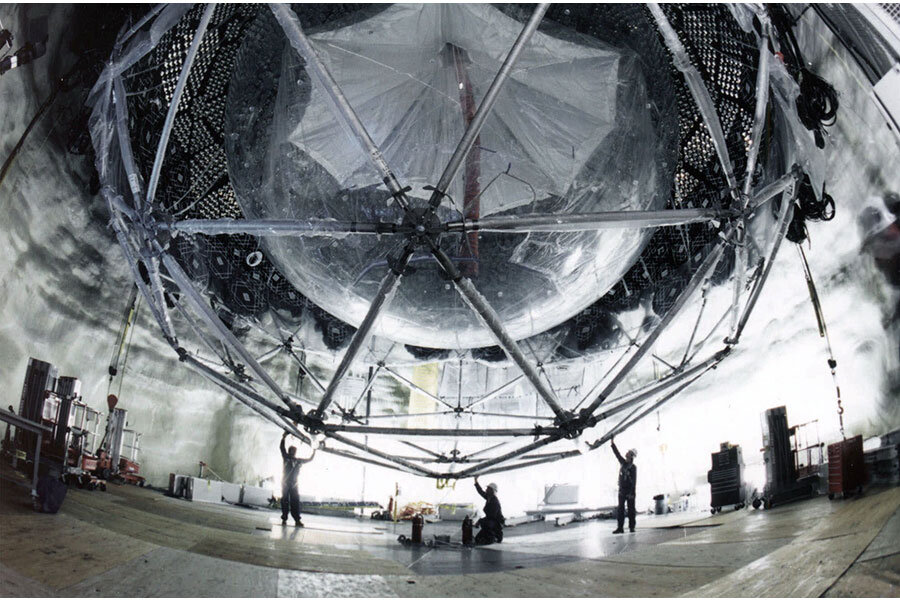$3 million Breakthrough Prize: Why mutable neutrinos won the day
Loading...
The physicists wore gowns and tuxes, and the red carpet was rolled out Sunday night a little north of Hollywood – at NASA's Ames Research Center in Mountain View, Calif., where for the third year the Breakthrough Prizes were handed out to commemorate achievements in mathematics and science at an Oscar-like awards show.
The big winner of the evening were neutrinos, which have had a successful awards season, having also picked up a Nobel prize this year.
Unlike the Nobel, which named two laureates for their work in figuring out that the universe's most basic particles can switch between three different types, the Breakthrough Prize in Fundamental Physics is split among 1,370 physicists – the two Nobel prize winners among them – who have contributed to five separate experiments to arrive at the discovery that neutrinos have mass.
The five experiments established that neutrinos, which come in three types, also known as flavors, can change – or oscillate – as they zip through space, a startling departure from the Standard Model of particle physics, which previously assumed that the fundamental particles known as neutrinos would be massless. Yet in order for neutrinos to oscillate, they must have different (and therefore nonzero) masses, Scientific American's Clara Moskowitz reports.
The discovery of neutrino oscillations cracked open an entirely new science, creating a field of research to discover how much mass neutrinos have, and why they have mass in the first place.
“These days neutrinos are very hot,” says Wang Yifang of the Institute of High Energy Physics in Beijing, a co-leader of the Daya Bay experiment, which is sharing the prize. “We are at a very special moment and we are extremely lucky to be able to participate in this great advancement of science.”
The result of these teams' work is that physicists now know how the sun – and every other star – works at its most elemental level; a long-held mystery until physicists identified neutrinos escaping from the core of the sun, which unlocked the first step in the process of nuclear fusion, a central process of solar energy, and an event that creates something as simple and as complicated as making stars shine.
Seven leaders of five experiments, as well as all of the co-authors of the research papers – 1,370 individuals total – were named Breakthrough laureates. The five teams will split the prize money ($600,000 each), with two thirds of the cash going to the experiments' leaders and one third of the prize to the collaborators.
The awards are given in seven $3 million award increments, one of which was split among the vast number of physicists. In addition, $500,000 was split between eight researchers starting out their careers, as well as $400,000 to a high school student for creating a video communicating a scientific concept.
Sergey Brin of Google, Anne Wojcicki of the genetics company 23andme, Jack Ma of Alibaba and his wife, Cathy Zhang, Yuri Milner, an entrepreneur and venture capitalist who founded the awards, and his wife, Julia Milner, and Mark Zuckerberg of Facebook and his wife, Priscilla Chan, oversee the awards, and gave a total of $21.9 million to physicists, mathematicians, and life scientists on Sunday evening.
“It’s a very good feeling” to have gained recognition from both committees this year, says Arthur McDonald of Queens University in Ontario, who won the Nobel and the Breakthrough for his work at the Sudbury Neutrino Observatory (SNO) in Canada in an interview with Scientific American. “We didn't set out to win prizes; we set out to do solid physics, but these prizes are an indication that the scientific community regards our results as being really significant.”








